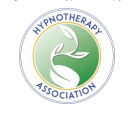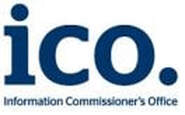2 Day Parts Therapy Workshop
SKU:
003
£250.00
£250.00
Unavailable
per item
How can you effectively help the client who struggles with inner conflicts?
Parts therapy is hypnosis for inner conflict resolution; and the parts therapy process often helps clients succeed even when other hypnotic techniques have failed.
According to experts, we all have anywhere from five to fifteen various aspects (or parts) of the subconscious that influence us in any given week. In other words, we all wear different hats.
Parts therapy is a highly effective hypnotic technique to help clients resolve inner conflicts. Someone strongly desiring to attain a goal, but who also experiences self-sabotage, may be a prime candidate for PARTS THERAPY.
Often using different names, others emulate this profoundly beneficial technique taught and practiced by the late Charles Tebbetts (a pioneer of client-centered hypnotherapy), parts therapy resembles ego state therapy and voice dialogue, as well as other variations going by different names.
Competently facilitated, parts therapy often helps people get past barriers when other techniques are insufficient. However, there are pitfalls that must be avoided in order to maximize results for your clients.
Numerous professionals around the world help clients by employing either parts therapy or variations, which are similar techniques with different names that are based on the same concept.
Prior to his passing, Tebbetts asked Roy Hunter to continue his work. With a few updates made over the years, Roy now teaches Client Centred Parts Therapy and you can have access to his 2 day workshop right here.
Objectives: Participants will learn…
Workshop Outline
1. Learning Objectives
2. Introduction and Overview
3. Variations of Parts Therapy
4. Important Background Information: The Four Hypnotherapeutic Steps to Facilitate Change; What Is Parts Therapy?; Which Hypnotherapy Objectives Can Parts Therapy Fulfil?; Why Regression Therapy Is a Prerequisite to Parts Therapy; Hypnotic Regressions: Cautions; When Is Parts Therapy Appropriate?; Ideomotor Responding and Psychodynamics; Ideomotor Questions to Assess Symptom Psychodynamics
5. When Is Parts Therapy Appropriate?
Sometimes it is obvious, but not always; Ideomotor Responding and Psychodynamics; Scripts for Setting Up Ideomotor Response Signals; Ideomotor Questions to Assess Symptom Psychodynamics
6. Exploring Parts Therapy: Article written by Charles Tebbetts; An Important 1990 Update; Other Updates; Overview of Important Procedures
7. The Parts Therapy Session: Preparation (First Phase of Parts Therapy); The 11-Step Process (the Second Phase of Parts Therapy); Conclusion (Third Phase, Concluding the Parts Therapy Session)
8. Avoiding Potential Pitfalls
9. Parts Therapy for Pain Management*
10. Unresolved Past Grief*
11. For the Open-Minded: Exploring our spiritual potential and more…*
12. Demonstration and Concluding Comments
Parts therapy is hypnosis for inner conflict resolution; and the parts therapy process often helps clients succeed even when other hypnotic techniques have failed.
According to experts, we all have anywhere from five to fifteen various aspects (or parts) of the subconscious that influence us in any given week. In other words, we all wear different hats.
Parts therapy is a highly effective hypnotic technique to help clients resolve inner conflicts. Someone strongly desiring to attain a goal, but who also experiences self-sabotage, may be a prime candidate for PARTS THERAPY.
Often using different names, others emulate this profoundly beneficial technique taught and practiced by the late Charles Tebbetts (a pioneer of client-centered hypnotherapy), parts therapy resembles ego state therapy and voice dialogue, as well as other variations going by different names.
Competently facilitated, parts therapy often helps people get past barriers when other techniques are insufficient. However, there are pitfalls that must be avoided in order to maximize results for your clients.
Numerous professionals around the world help clients by employing either parts therapy or variations, which are similar techniques with different names that are based on the same concept.
Prior to his passing, Tebbetts asked Roy Hunter to continue his work. With a few updates made over the years, Roy now teaches Client Centred Parts Therapy and you can have access to his 2 day workshop right here.
Objectives: Participants will learn…
- Explain the concept of Parts Therapy;
- Compare Parts Therapy with several other similar techniques such as Ego State Therapy;
- Summarize the four objectives that constitute the foundation of Client Centred Hypnosis and Hypnotherapy;
- Assess when Parts Therapy is indicated;
- Explain to a client how Parts Therapy is a way to mediate inner conflicts between different parts of the client's personality;
- Utilize hypnotic techniques in order to adequately prepare the client for the Parts Therapy process;
- Properly apply the eleven steps of the Parts Therapy process (or protocol) to help a client resolve an inner conflict;
- Practice the Parts Therapy steps through group role play;
- Demonstrate the preferred technique for integrating the parts before emerging the client;
- Use hypnotic suggestions and imagery to help the subconscious accept the resolution as fitting and viable;
- Observe demonstrations of the application of the 11-Step Process (protocol);
- Explain the conceptual and clinical rationale for each step of the Parts Therapy process.
Workshop Outline
1. Learning Objectives
2. Introduction and Overview
3. Variations of Parts Therapy
4. Important Background Information: The Four Hypnotherapeutic Steps to Facilitate Change; What Is Parts Therapy?; Which Hypnotherapy Objectives Can Parts Therapy Fulfil?; Why Regression Therapy Is a Prerequisite to Parts Therapy; Hypnotic Regressions: Cautions; When Is Parts Therapy Appropriate?; Ideomotor Responding and Psychodynamics; Ideomotor Questions to Assess Symptom Psychodynamics
5. When Is Parts Therapy Appropriate?
Sometimes it is obvious, but not always; Ideomotor Responding and Psychodynamics; Scripts for Setting Up Ideomotor Response Signals; Ideomotor Questions to Assess Symptom Psychodynamics
6. Exploring Parts Therapy: Article written by Charles Tebbetts; An Important 1990 Update; Other Updates; Overview of Important Procedures
7. The Parts Therapy Session: Preparation (First Phase of Parts Therapy); The 11-Step Process (the Second Phase of Parts Therapy); Conclusion (Third Phase, Concluding the Parts Therapy Session)
8. Avoiding Potential Pitfalls
9. Parts Therapy for Pain Management*
10. Unresolved Past Grief*
11. For the Open-Minded: Exploring our spiritual potential and more…*
12. Demonstration and Concluding Comments










